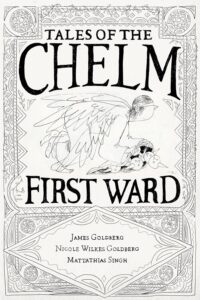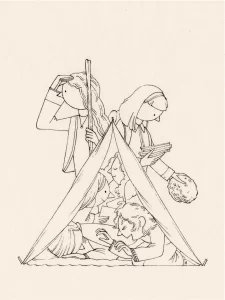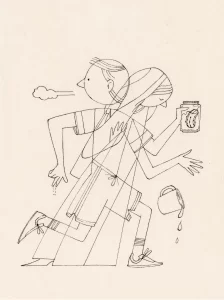 Many stories from Tales of the Chelm First Ward by James Goldberg, Nicole Wilkes Goldberg, and Mattathias Singh have already been serialized on Wayfare magazine. The complete collection just came out. Here are a few answers to questions from James Goldberg.
Many stories from Tales of the Chelm First Ward by James Goldberg, Nicole Wilkes Goldberg, and Mattathias Singh have already been serialized on Wayfare magazine. The complete collection just came out. Here are a few answers to questions from James Goldberg.
Q: What is Tales of the Chelm First Ward?
A: Tales of the Chelm First Ward is a satirical novel-in-short-stories set in a Mormon ward in the town of fools from Eastern European Jewish folklore. The book’s introduction explains the setting. In each story, character encounter a common situation—a child marrying outside the Church, a ward council, an approaching baptism—and address it using terribly backward logic. The hope is that the backwardness of the  Chelmites’ logic helps shed a little light on the backwardness in some of our own assumptions. And that maybe learning to laugh at the Chelm Saints will help us do some healthy laughing at ourselves.
Chelmites’ logic helps shed a little light on the backwardness in some of our own assumptions. And that maybe learning to laugh at the Chelm Saints will help us do some healthy laughing at ourselves.
Q: Do you have a favorite story?
A: That’s tough. I’m quite fond of one called “Hirsh the Atheist.” It’s about a man who wants to learn enough about Latter-day Saint beliefs to reject God on Mormon terms—and about his relationships with his miserly landlord and kind-hearted neighbor, both of whom are members of the Church. But I’m also quite fond of many of these characters. I have a soft spot for the Cohens, an aging and quarrelsome couple who attend Church on opposite weeks. I love Leah Kantor, who loves great music but tries to express herself through the ward choir. I like Golda Fischer, a young woman who helped me realize that I have a lot to say about girls’ camp.

Q: Do these read well as standalone stories? Or more like chapters in a novel?
A: Once you know the premise, virtually all the stories work as standalone pieces. Each has its own protagonist or protagonist who faces a problem and tries out one or more totally bonkers solutions. As a novel, though, the ward as a whole becomes the protagonist. You get to see different combinations of relationships, and how people appear in each other’s lives. The book is also set in a distinct period of time, from the early administrative changes of Russell M. Nelson’s presidency through the onset of the coronavirus pandemic, so you get a sense of how the ward responds to change.

A friend told me that she feels like the biggest arc, though, was for her as a reader. At the beginning, she was recognizing the broken logic and cringing with mild embarrassment. By the end, the embarrassment had gradually been offset by her affection for the ward members. For her, it’s a book about recognizing that many things in our community are a little crazy—and then embracing a love for it anyway.

.
And those Habben illustrations—wonderful!